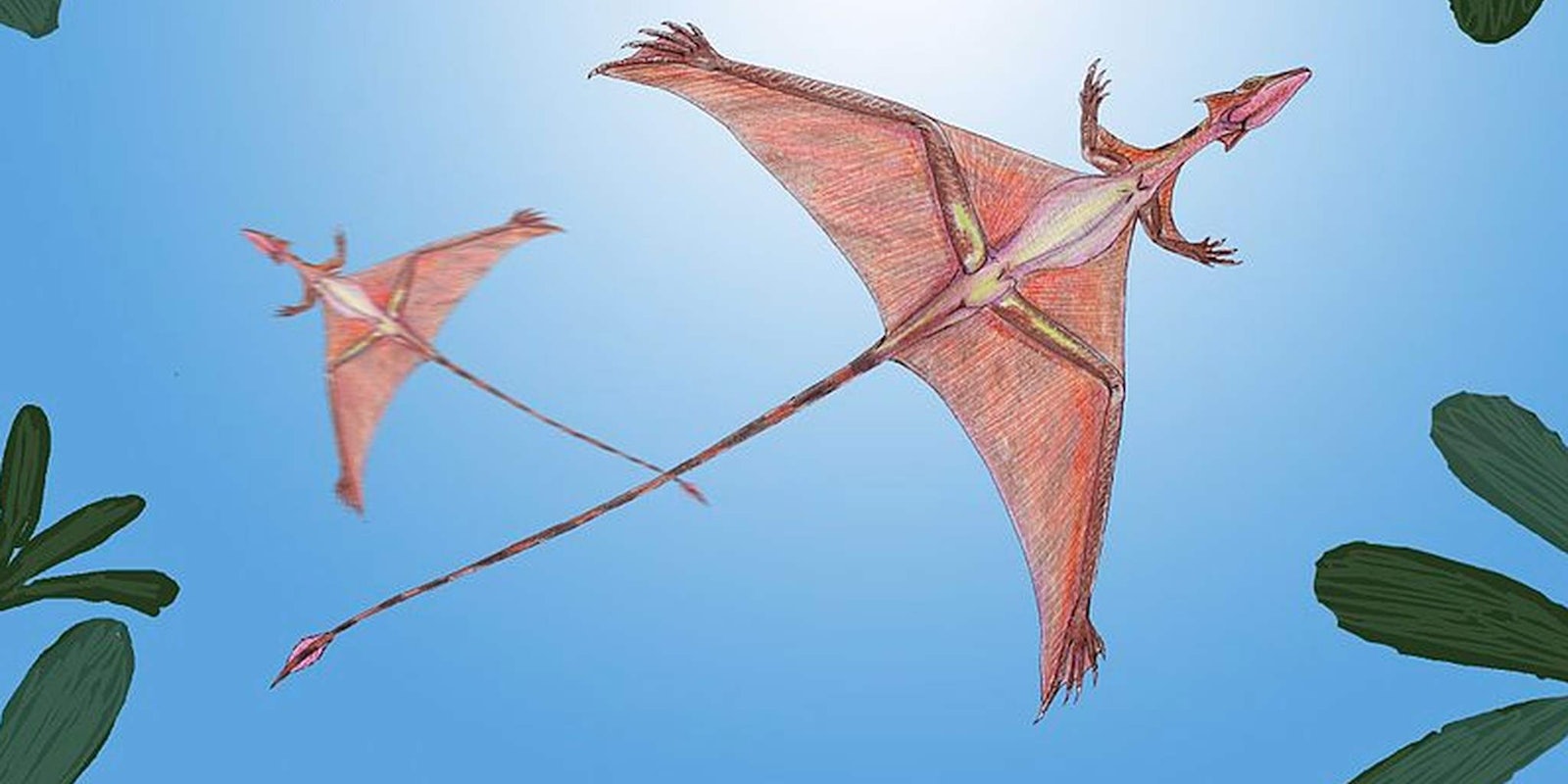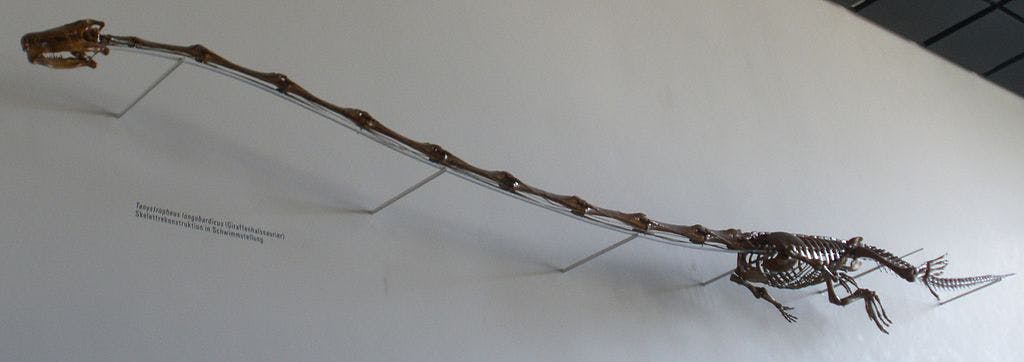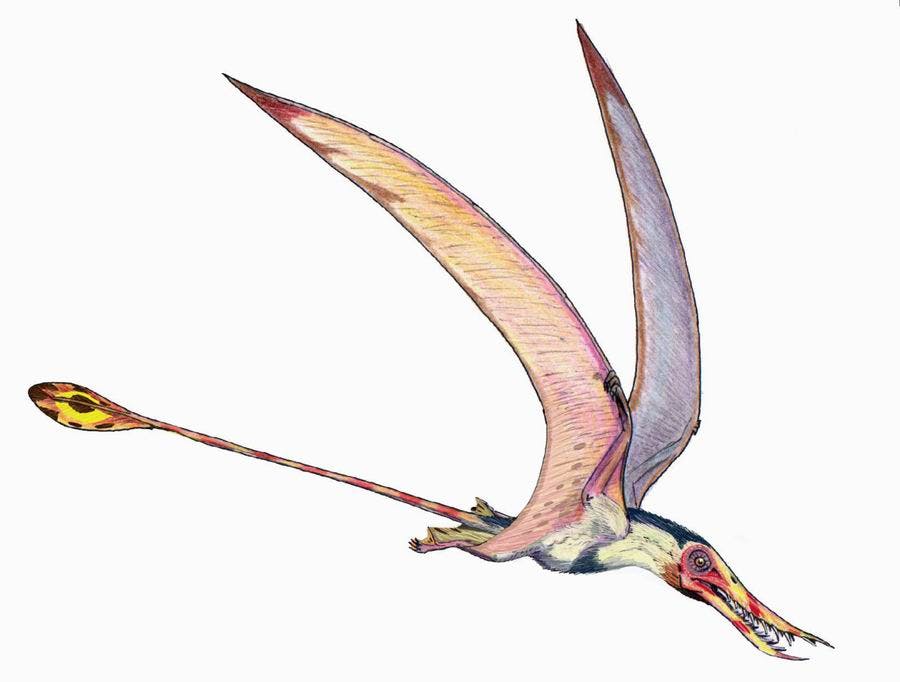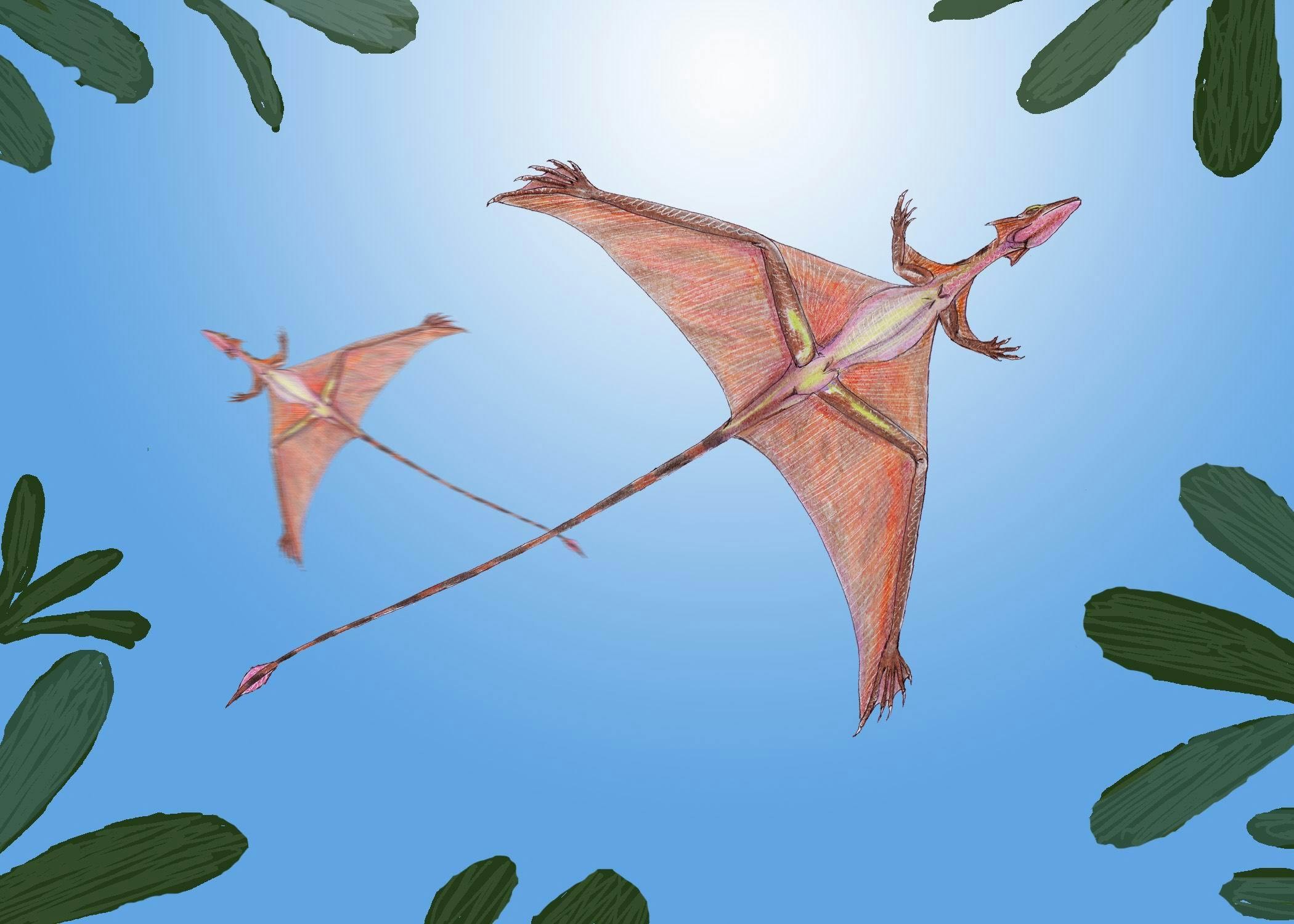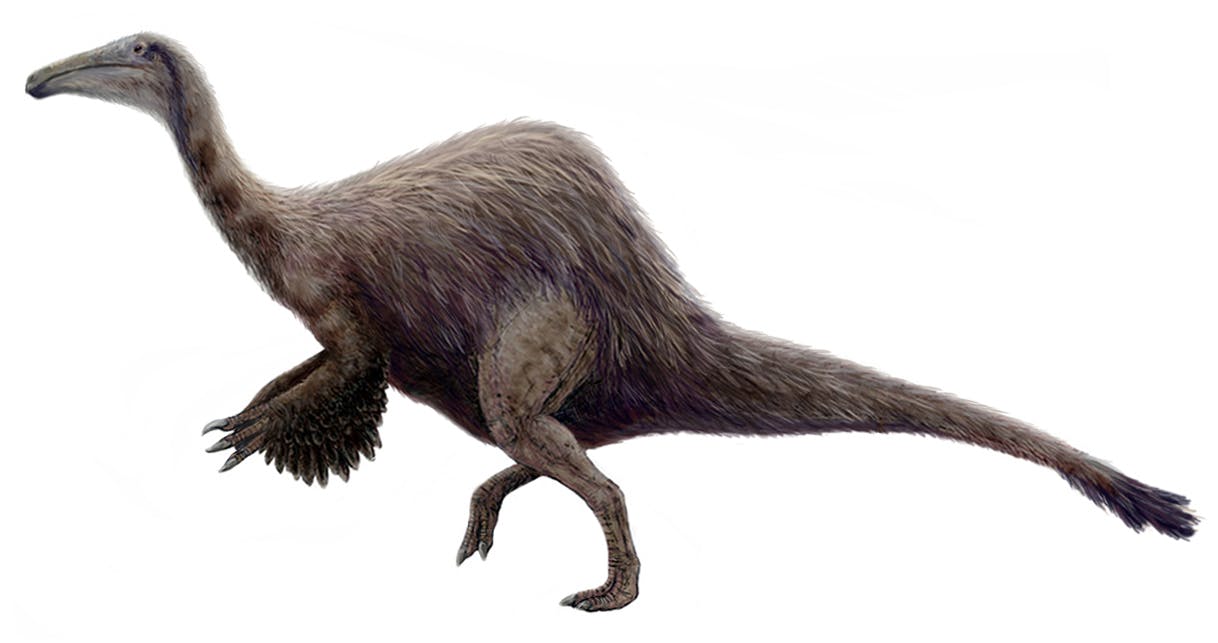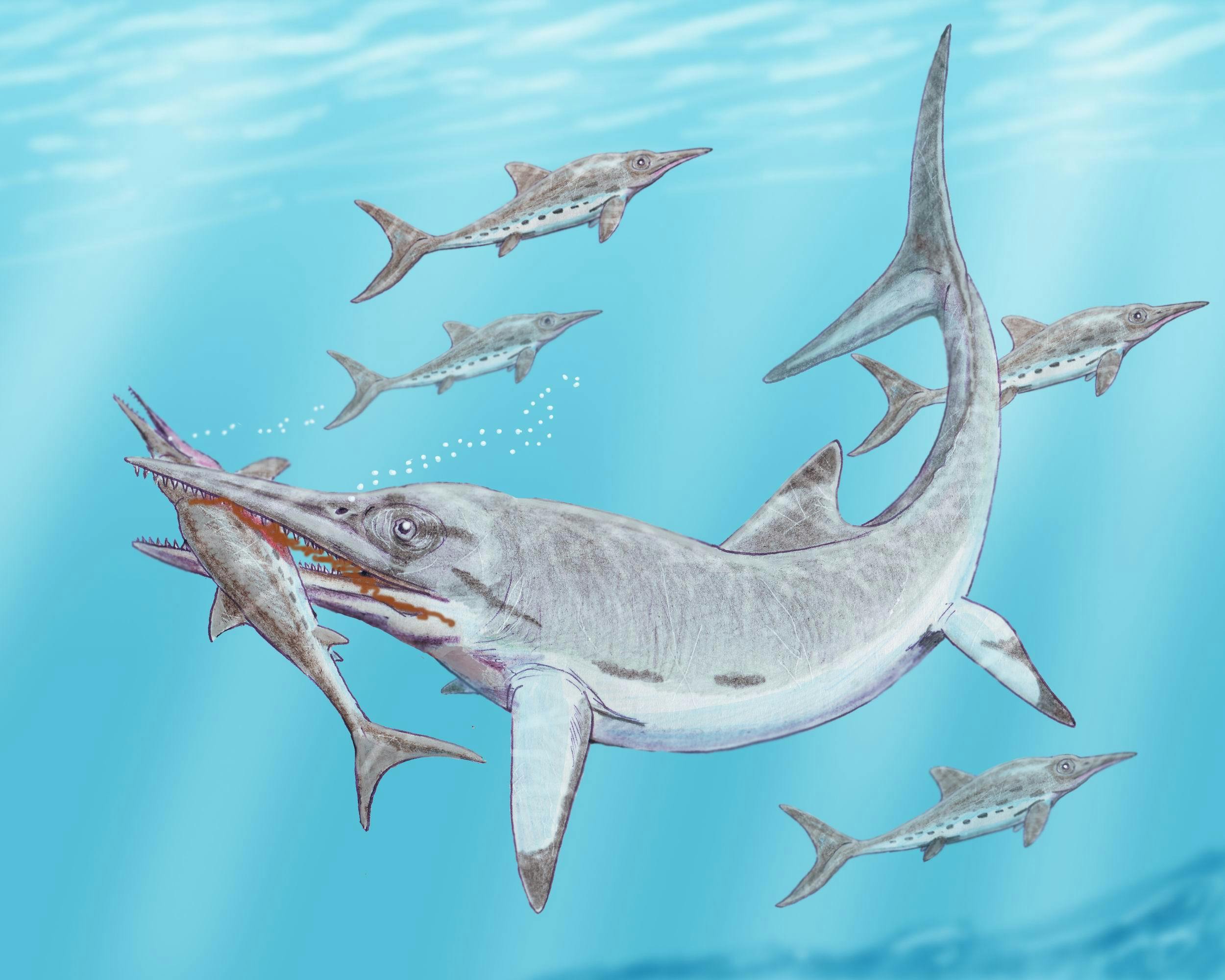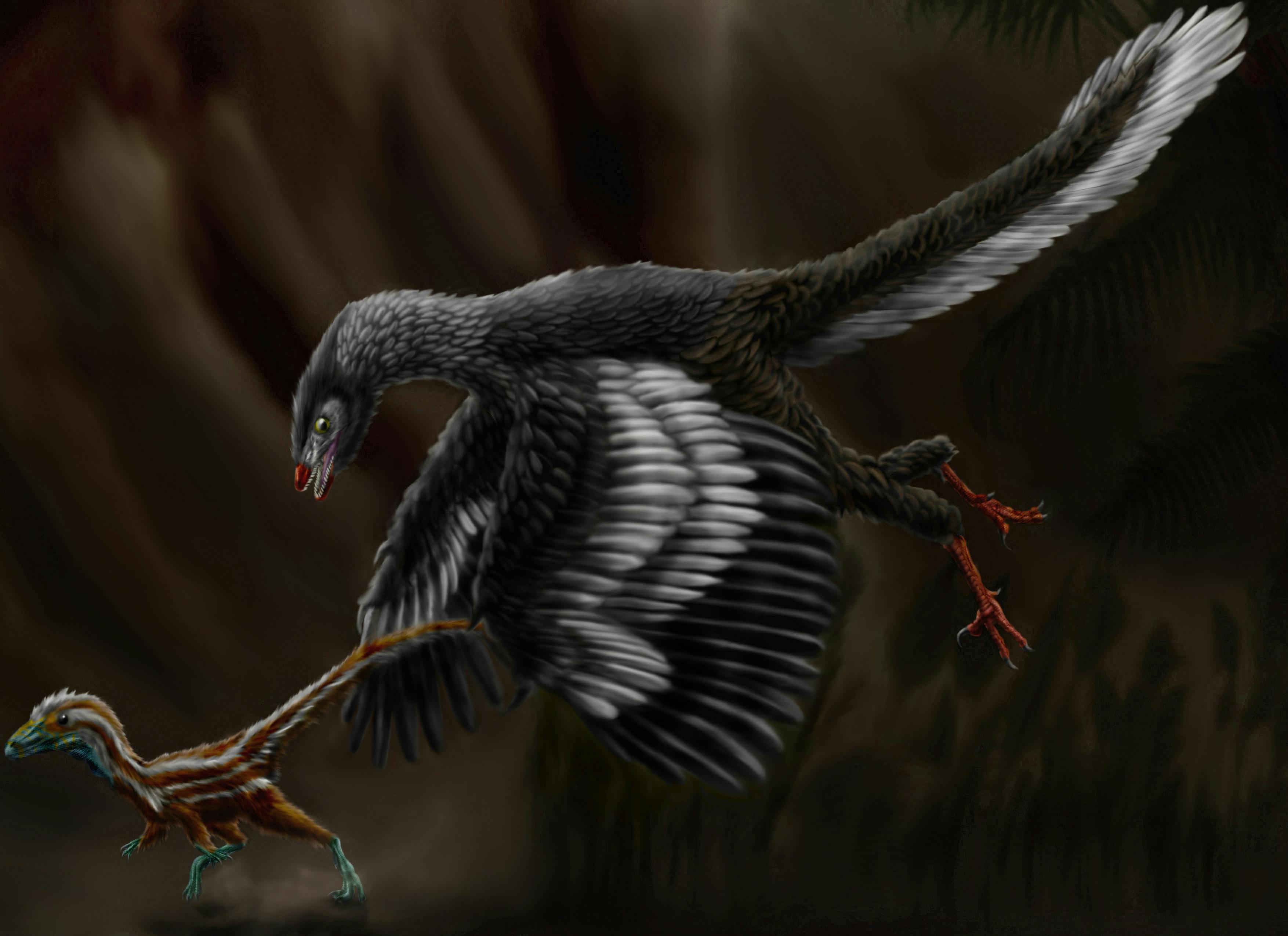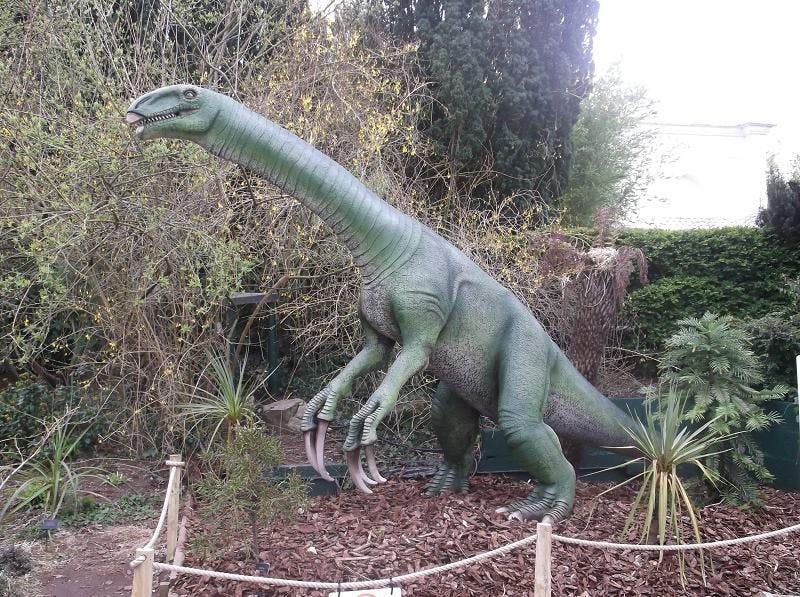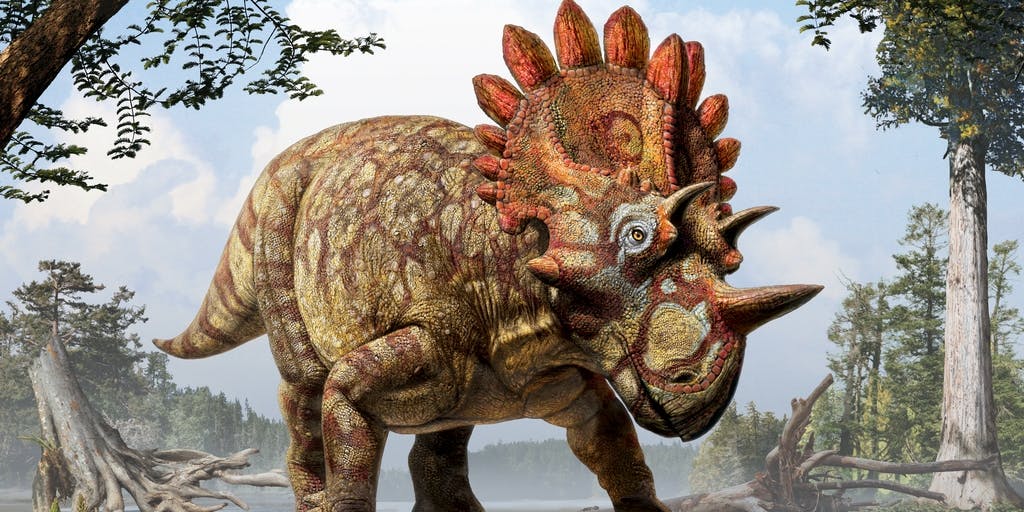We’re pretty juiced for Jurassic World here at the Daily Dot. You’ve got your great-white-shark-eating sea monsters, your dinosaur-whisperer Chris Pratt, your T-rexes, your self-driving human hamster balls, Chris Pratt, your velociraptor squad, and Chris Pratt.
Should be a good time.
Jurassic World’s website lists all the dinosaurs kept in captivity at the fictional theme park, and the writers certainly chose some cool ancient beasts. But the dinosaur world consisted of a lot more than just aggressive predators with tiny arms and the occasional stegosaurus. Here are some more awesome dinosaurs (and prehistoric non-dinosaurs) that we feel should get some time in the spotlight.
1) Tanystropheus
(tan-ee-stro-fee-us)
This guy hails from the middle Triassic period and is all neck and tail. Even though tanystropheus had the longest neck allowable by physics, it only had 10 cervical (neck) vertebra. They’re so huge that when its skeleton was first discovered, researchers thought its neck bones were its leg bones. That also means its neck was pretty stiff (probably to keep its head from just snapping off), so paleontologists think that Tanystropheus languidly swam along shallow lake beds and ate fish.
2) Rhamphorhynchus
(ram-for-ink-us)
This member of the pterosaurs had the weirdest beak and teeth of all the flying animals of the Jurassic. Those chompers were needle-like and jutted forward, perhaps to make spearing fish easier. Rhamphorhynchus had an imposing wingspan of roughly 6 feet, but these flying reptiles also had a short neck. As such, they probably flew pretty close to the water to find food. Remnants of Rhamphorhynchus have been found in the bellies of large ancient fish, leading some researchers to believe that they sometimes found themselves being the fishes’ food, instead.
3) Sharovipteryx
(shar-oh-vip-ter-ix)
The age of the dinosaurs was kind of a strange time in the history of animal aviation. This cute lil’ guy was a living reptilian glider, with its main flying-membranes attached to its legs rather than its arms. It was originally called “podopteryx” or “foot-wing” by its discoverer. Researchers are still working out exactly how the animal flew, but they have likened the shape of its flying membranes to those of a delta wing on modern gliders.
4) Deinocheirus mirificus
(dy-noh-ky-ruhs mur-ihf-ee-kus)
This terror’s name is Greek for “horrible hand,” though in reality it probably wasn’t that terrifying. Originally discovered the 1960s, researchers only had a set of arm and shoulder bones from a single specimen. Determining the size, shape, and lifestyle of Edward Dinohands here was a huge mystery among paleontologists, until bones of a fully preserved specimen were united in 2014. The fossil revealed Deinocheirus mirificus to be a truly bizarre 36-foot-long, duck-billed giant that looks to be a cross between a platypus, a camel, and an ostrich. Hulking about in the Cretaceous period, Deinocheirus mirificus mostly ate plants and maybe the occasional fish or two.
5) Temnodontosaurus
(tem-noh-dawn-toh-sawr-us)
Temnodontosaurus was a large, big-mouthed, aggressive member of the Icthyosaurs (ick-thee-yo-saurs)—aquatic reptiles that lived through the Jurassic and Cretaceous periods. Though Icthyosaurs resemble modern-day dolphins, they are unrelated. Temnodontosaurs could be up to 30 feet long and were probably top predators in their day, dining on whatever they pleased. They were also the only Ichtyosaurs thought to consume vertebrates like fish, instead of sticking to the softer, smaller prey like squid.
6) Archaeopteryx
(ahr-kee-op-tehr-iks)
This little bird-thing caused quite the stir among paleontologists when it was first discovered. Researchers originally thought this feathered beast was a transitional animal in the evolution of dinosaurs to modern-day birds. And while researchers still consider Archeopteryx an important link between dinosaurs and birds, this little guy most likely did not fly, though it was possibly was capable of gliding down from trees. What’s interesting, though, is that it suggests that feathers may have evolved for other reasons—such as temperature regulation—and their use in flight came later.
7) Therizinosaurus
(ther-un-zeen-oh-sawr-us)
This weirdo had huge claws, strange feet, and was originally thought to be a turtle according to Mental Floss. It’s name means “sythe lizard,” though researchers think it was likely a herbivore that used its massive claws to strip bark from trees or defend itself from predators. It’s not clear what Therizinosaurus ate, however, because no one has ever found its skull. The teeth would clue paleontologists into its diet.
Honorable mention: Regaliceratops peterhewsi, AKA ‘Hellboy’
Researchers announced Friday that they have discovered a new species of dinosaur they affectionately call Hellboy. The official name, though, is Regaliceratops peterhewsi. It’s similar to triceratops but has some notable differences. This species has “comically small” eye horns, but Hellboy’s nickname actually comes from the harsh conditions of its excavation, not its head spikes.
Illustration via Dmitry Bogdanov/Wikimedia (CC BY 3.0)

